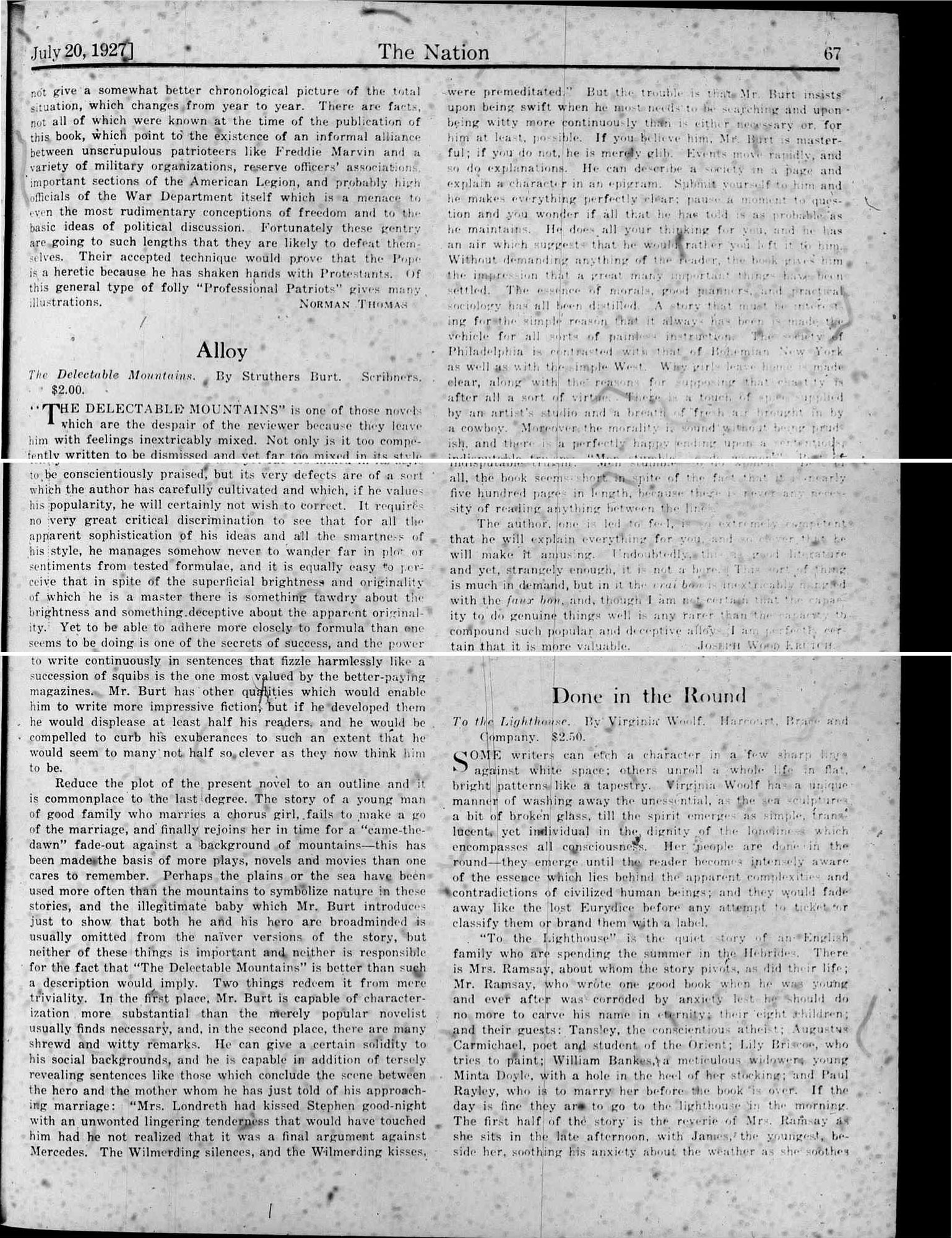
Mary Ross, “Done in the Round.” The Nation. July 20, 1927, pp.67-68.
Done in the Round
To the Lighthouse. By Virginia Woolf. Harcourt, Brace and
Company. $2.50
SOME writers can etch a character in a few sharp lines
against white space; others unroll a whole life in flat,
bright patterns like a tapestry. Virginia Woolf has a unique
manner of washing away the unessential, as the sea sculptures
a bit of broken glass, till the spirit emerges as simple, translucent,
yet individual in the dignity of the loneliness which
encompasses all consciousness. Her people are done in the
round—they emerge until the reader becomes intensely aware
of the essence which lies behind the apparent complexities and
contradictions of civilized human beings; and they would fade
away like the lost Eurydice before any attempt to ticket or
classify them or brand them with a label.
“To the Lighthouse” is the quiet story of an English
family who are spending the summer in the Hebrides. There
is Mrs. Ramsay, about whom the story pivots, as did their life;
Mr. Ramsay, who wrote one good book when he was young
and ever after was corroded by anxiety lest he should do
no more to carve his name in eternity; their eight children;
and their guests: Tansley, the conscientious atheist, Augustus
Carmichael, poet and student of the Orient; Lily Briscoe, who
tries to paint; William Bankes, a meticulous widower; young
Minta Doyle, with a hole in the heel of her stocking; and Paul
Rayley, who is to marry her before the book is over. If the
day is fine they are to go to the lighthouse in the morning.
The first half of the story is the reverie of Mrs. Ramsay as
she sits in the late afternoon, with James, the youngest, beside
her, soothing his anxiety about the weather as she soothes






